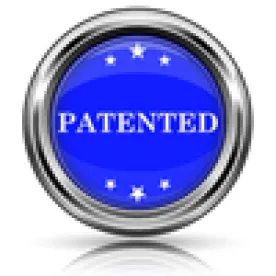Takeaway: The background knowledge possessed by a person having ordinary skill in the art is an integral part of an obviousness analysis.
In its Final Written Decision, the Board determined that Petitioner had shown by a preponderance of the evidence that claims 1-15 of the ’012 patent are unpatentable. The ’012 patent relates to methods for making renewable jet fuel blendstock that meets ASTM blendstock requirements. Specifically, “[t]he methods comprise fermenting a biomass-derived feedstock, dehydrating the resulting alcohols to produce olefins, oligomerizing the olefins to form unsaturated oligomers, and hydrogenating the unsaturated oligomers to form the renewable jet fuel.” Trial had been instituted on two obviousness grounds.
The Board first addressed claim construction under a broadest reasonable construction. The Board declined to adopt any constructions and the parties proffered none. The Board then briefly addressed priority date. In its Decision to Institute, the Board had concluded that the challenged claims are not entitled to the priority date of a provisional application’s filing date. Because Patent Owner did not dispute this determination, the Board did not change its conclusion.
The Board then turned to asserted grounds of unpatentability. Petitioner argued that claims 1-12, 14, and 15 would have been obvious over Gruber and ASTM D7566-09, relying on the declaration of Dr. Joseph T. Joseph. Patent Owner, however, presented “no expert testimony or any other evidence to support its patentability argument.” The Board rejected “Patent Owner’s position that to establish prima facie obviousness, ‘each claim limitation must be provided by the prior art or inherently be present in the applied references.’” The Supreme Court has instructed that “there must be some articulated reasoning with some rational underpinning to support the legal conclusion of obviousness,” but such reasoning “need not seek out precise teachings directed to the specific subject matter of the challenged claim.” KSR Int’l Co. v. Teleflex Inc., 550 U.S. 398, 418 (2007). Instead, “the background knowledge possessed by a person having ordinary skill in the art is an integral part of an obviousness analysis.” The Board stated:
In this case, whether Gruber inherently discloses ASTM D7566 is irrelevant to our analysis, because Petitioner does not rely on inherency to establish obviousness. Indeed, Petitioner points to Gruber for suggesting that renewable jet fuel must meet ASTM specifications for jet fuels. Pet. 23. Petitioner also relies on the knowledge of a skilled artisan that U.S. government agencies would adopt ASTM D7566, which provides the requirements for jet fuels containing synthesized hydrocarbons, to regulate their sale and use. Id. at 26 (citing Ex. 1009 ¶ 21).
The Board thus faulted Patent Owner for “attacking the references individually” and found that Petitioner has shown by a preponderance of the evidence that “one of ordinary skill in the art would have had a reason to modify the teachings of Gruber to make a renewable jet fuel blendstock that meets or exceeds the requirement of ASTM D7566-09, and would have had a reasonable expectation of success in doing so.”
The Board next addressed Petitioner’s arguments that claim 13 would have been obvious over Gruber, ASTM D7566-09, and Mossman:
Patent Owner [] contends that Mossman, “silent with respect to any ASTM standards,” cannot remedy the deficiencies of Gruber and ASTM D7566-09. Id. We are not persuaded by this argument either. As explained above, we do not find deficiencies in the combination of Gruber and ASTM D7566-09 in rendering claim 1 obvious. Here, Petitioner relies on Mossman not for teaching ASTM standards—ASTM D7566-09 provides such information—but for supplying the additional limitations of claim 13. Pet. 35–37. Thus, the fact Mossman does not discuss any ASTM standards is of no consequence in our obviousness analysis.
The Board thus found “that one of ordinary skill in the art would have had a reason to combine the teachings of Gruber, ASTM D7566-09, and Mossman, and in doing so, would have had a reasonable expectation of success in arriving at the process of claim 13.”
In sum, the Board found that Petitioner had shown by a preponderance of the evidence that all challenged claims 1-15 of the ’012 patent would have been obvious.
ButamaxTM Advanced Biofuels LLC v. Gevo, Inc., IPR2014-00402
Paper 22: Final Written Decision
Dated: August 5, 2015
Patent: 8,373,012 B2
Before: Christopher L. Crumbley, Georgianna W. Braden, and Zhenyu Yang
Written by: Yang



 />i
/>i

